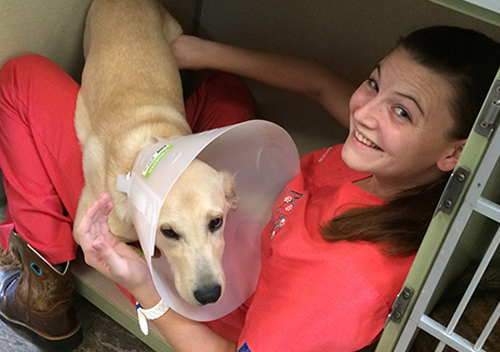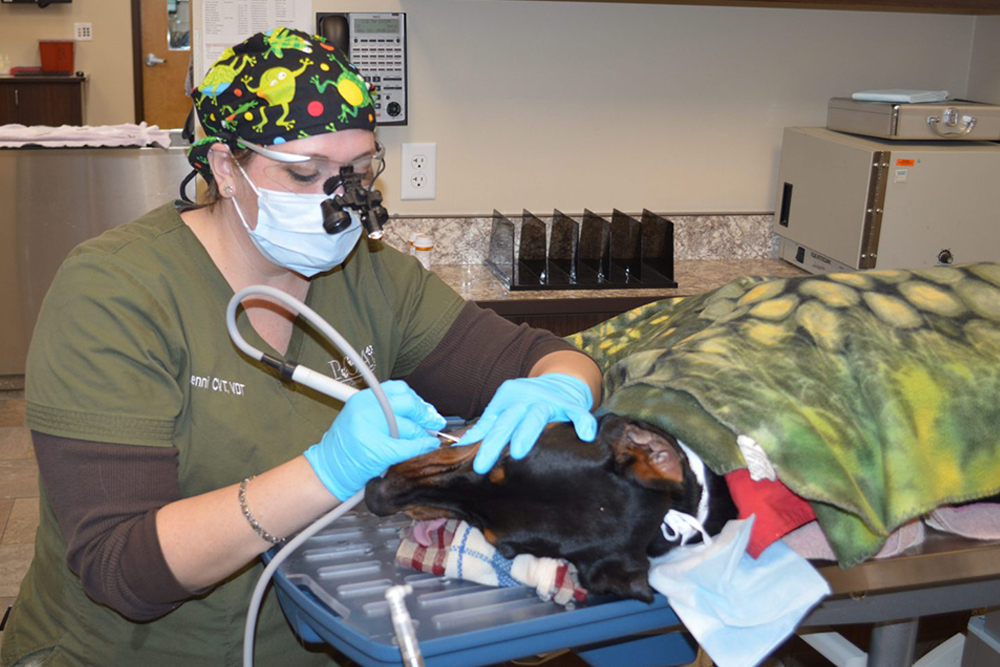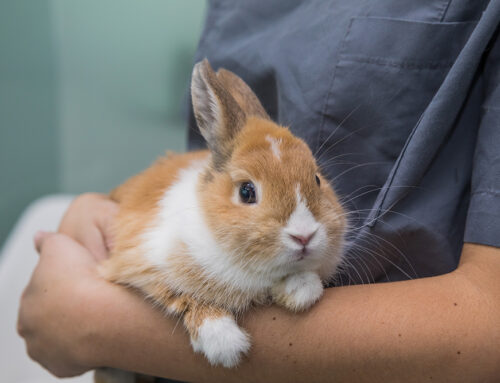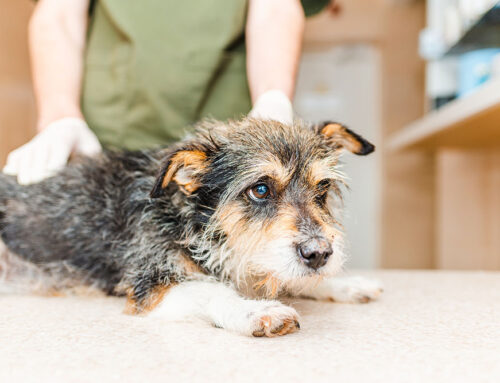Why Does It Cost So Much To Clean My Dog’s Teeth? (Or does it?)
Jim Noone, DVM
A common exclamation from pet owners when viewing a dental cost estimate is “It’s so expensive!”. But is a complete dental treatment really so expensive when your really look at it?
Studies show that up to 80% of pets over 3 years of age have some degree of dental disease. As concerned pet owners, the desire to keep your pet’s teeth in great shape should be a priority to prevent secondary disease, prevent infection, and prevent pain. At Parker Center Animal Clinic we strive to provide the highest quality and most thorough dental care available. This means not “just a cleaning” but a thorough oral exam, detailed charting of all teeth, plus diagnostics and treatment including extractions if required.
The following is included in a dental procedure at Parker Center Animal Clinic:
- Pre-anesthetic workup to include a complete physical exam and comprehensive blood work to look for underlying issues.
- Another brief exam on the day of the procedure and a veterinary technician walking your pet every 2 hours before and after the procedure.
- IV catheter placement with fluids throughout the procedure.
- Pre-anesthetic medication administration including sedation and pain medication.
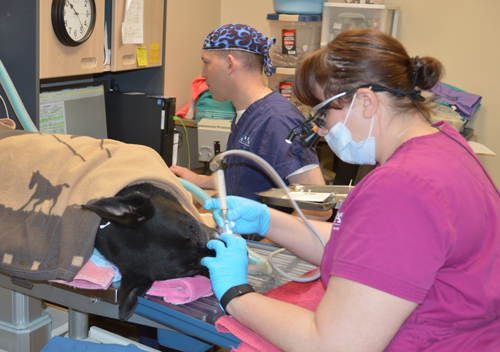
- General anesthesia using an endotracheal tube for gas anesthesia and to protect the airway from inhalation of water and debris from the mouth.
- A trained technician dedicated to monitoring anesthesia during the entire procedure, including charting of body temperature, heart rate, respiratory rate, blood pressure, oxygen saturation, end tidal carbon dioxide levels, and surgical depth of anesthesia.
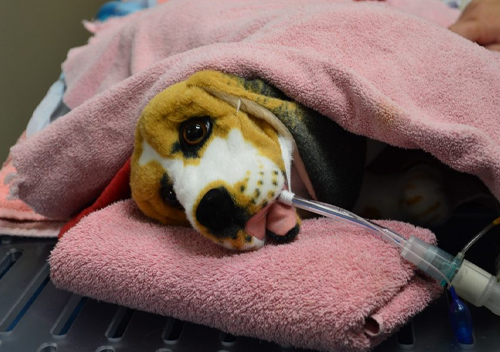
- Scaling of all teeth with an ultrasonic scaler followed by hand scaling of the teeth surfaces below the gum line, probing of all gingival sulci, charting all findings, and polishing of teeth.
- Radiographs (x-rays) of all ALL teeth to fully evaluate the mouth. Approximately 80% of all dental disease is under the gum line and can only be found with radiographs.
- Treatment of all diseased teeth including
- Possible odontoplasty (smoothing rough enamel),
- Bonding and sealing enamel chips into the dentin (porous layer of tooth communicating to the pulp cavity),
- Antibiotic infusion into deep gingival pockets,
- Gingivectomy (removal of excessive gum tissue),
- Local nerve injections to reduce post surgical pain and the amount of general anesthetic,
- Removal of any oral masses,
- Extraction of diseased teeth
- Class IV laser therapy to reduce pain and inflammation.
- Fluoride treatment to strengthen the teeth or a dental sealant applied to delay/prevent plaque from reforming on the teeth.
- Recovery monitored by a dedicated recovery technician until your pet is fully awake then continued monitoring until time to go home.
- A comprehensive report of all findings and treatments along with “go home” instructions is provided.
Anesthesia is necessary to prevent pain, anxiety, and to properly clean and examine your pet’s teeth. Therefore, all treatment is usually performed in a single event. In human dentistry we tend to schedule needed treatments over an extended time. This makes a dental procedure for a pet seem pricey compared to what is paid at a semi-annual dental appointment (exam, cleaning without anesthesia and treatment) for a human.
And remember, quality dental care may cost more for ourselves and for our pets, but isn’t it so often true that you usually “get what you pay for”? Granted, there is a wide range of fees quoted for “dental cleanings” among veterinary clinics, but there is usually a wide variation in the actual services provided as well. Maybe a complete dental “cleaning” (truly a surgical procedure) is not so expensive when the full scope of the procedure is taken into account!
